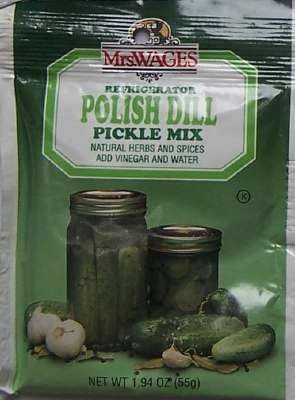
Looking for Apple Cider: How to make and bottle your own homemade Apple Cider (directions, recipe, with photos and free) in 2025? Scroll down this page and follow the links. And if you bring home some fruit or vegetables and want to can, freeze, make jam, salsa or pickles, see this page for simple, reliable, illustrated canning, freezing or preserving directions. There are plenty of other related resources, click on the resources dropdown above. If you are having a hard time finding canning lids, I've used these, and they're a great price & ship in 2 days.
If you have questions or feedback, please let me know! There are affiliate links on this page. Read our disclosure policy to learn more.
Apple Cider: How to make and bottle your own homemade Apple Cider (directions, recipe, with photos and free)
How to Make Homemade Fermented Apple Cider
Making and canning your own natural, ferment apple cider is easy. You
can make regular sweet (non-alcoholic apple cider) or hard cider. And if you are planning to make applesauce, you will probably have extra juice
from cooking the apples! Here's how to make your own home canned apple cider (some
call it apple cider, but it isn't fermented, so I don't think that really applies), complete instructions in easy steps and completely illustrated.
The apple cider will taste MUCH better than anything you've ever had from a store, and by selecting the right apples, it will be so naturally-sweet
that you won't need to add any sugar at all.So, what is the difference between apple cider and apple juice? The Massachusetts Dept of Agriculture defines apple cider as raw apple juice that has not undergone filtration to remove coarse particles of pulp or sediment, like apple juice has. In other words, apple cider is simply raw, unfiltered apple juice. Of course, many people prefer the ferment form, "hard" apple cider, which is what we will do on this page. If you want the unfermented form of apple cider, see this page instead.
In the commercial cider mill, apples are washed, cut and ground into a mash that is the consistency of applesauce. Layers of the mash are wrapped in cloth, and put into the wooden racks of a press. The hydraulic press squeezes the layers, and presses the juice out, where it is collected and put into refrigerated tanks, which are kept very close to freezing. This juice is bottled, as needed, as apple cider.
Apple juice is juice that has been filtered to remove solids and pasteurized so that it will stay fresh longer. Of course, some apple cider is pasteurized, too.
Prepared this way, the jars have a shelf life of 18 months to 2 years, and require no special attention.
Directions for Making Fermented Natural Apple Cider
Ingredients and Equipment
|
|
Recipe and Directions
Step 1 - Get your yeast
Any of the dry and liquid brewing yeasts will work, and you can find them online (see boxes at right) or from local homebrew stores. You can buy specialized liquid yeast packs intended specifically for fermenting cider, but dry wine yeasts do an excellent job and are substantially less expensive. Typically a pack of wine yeast is less than a dollar.)
Step 2 - Make your yeast starter
The day before you intend to brew your apple cider, make a yeast starter. This helps to get your cider fermenting right away; but if you are pressed for time you can go right ahead. To make the starter, pour the contents of one yeast packet into a clean sanitized bottle of your boiled apple juice, reseal the bottle and shake it up. Then set on the counter, room temperature (66 F to 77 F, 18C to 20 C). You should see a bit of bubbling within the bottle start within 5 to 8 hours. When the bubble starts, open the bottle to releive the pressure, then reseal it and put it in the refrigerator until you are ready to move on to step 3. Do get it out a couple of hours before you brew start step 3 to let it warm up to room temperature again. If you are starting with already made apple juice, skip to step 9. Otherwise, continue to step 3 to make apple juice from apples.
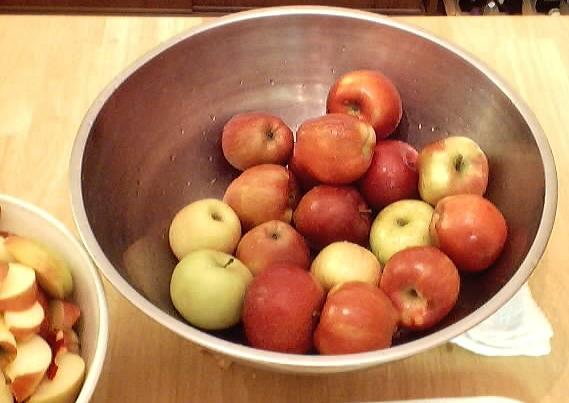 Step 3 -
Selecting the apples
Step 3 -
Selecting the apples
The most important step! You need apples that are sweet - that will eliminate the need to add any sugar. Most apple cider doesn't have as much natural sweetness or flavor because they use underripe or off-spec apples. You can choose the best apples you can get and make far better apple cider. Don't get me wrong, it is fine to use "seconds", as long as you cut out the bruised spots!
If you can, choose apples that are naturally sweet, like Red Delicious, Gala, Fuji, Rome and always use a mixture - never just one type. This year I used 4 bushels of red delicious and one each of Fuji, Yellow Delicious, Gala and Rome. This meant it was so sweet I did not need to add any sugar at all. And the flavor is great! The Fuji's and Gala's give it an aromatic flavor! Honeycrisp and Pink Lady are also excellent, sweet, flavorful apples.
Step 4 - How many apples and where to get them
You can pick your own, or buy them at the grocery store. But for large quantities, you will find that real* farmer's markets, like the Farmer's Market in Forest Park, Georgia have them at the best prices. In 2015, they were available from late September at $14 to $24 per bushel at the real farmer's markets, like the Atlanta-Forest park Georgia State Farmer's Market and orchards in the southeast of the U.S.
You will get about 12 to 20 quarts of apple cider per bushel of apples. Count on 15 or 16 quarts per bushel.
* - not the cutesy, fake farmer's markets that are just warehouse grocery stores that call themselves farmer's markets.
 Step
5 - Wash the jars and lids
Step
5 - Wash the jars and lids
Now's a good time to get the jars ready, so you won't be rushed later. The dishwasher is fine for the jars; especially if it has a "sanitize" cycle, the water bath processing will sanitize them as well as the contents! If you don't have a dishwasher with a sanitize cycle, you can wash the containers in hot, soapy water and rinse, then sanitize the jars by boiling them 10 minutes, and keep the jars in hot water until they are used. Leave the jars in the dishwasher on "heated dry" until you are ready to use them. Keeping them hot will prevent the jars from breaking when you fill them with the hot apple cider.
Put the lids into a pan of hot, but not quite boiling water (that's what the manufacturer's recommend) for 10 minutes, and use the magnetic "lid lifter wand" to pull them out.
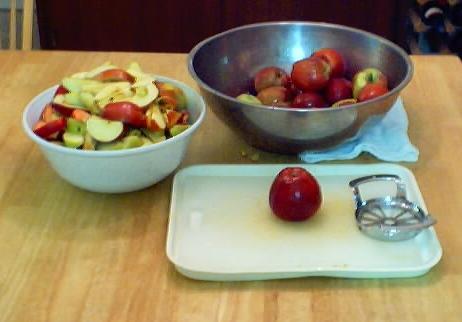 Step
6 -Wash and chop the apples!
Step
6 -Wash and chop the apples!
I'm sure you can figure out how to wash the apples in plain cold water.
Chopping them is much faster if you use one of those apple corer/segmenters - you just push it down on an apple and it cuts it into segments. Note: You do not peel the apples! You will put the entire apple into the pot to cook.
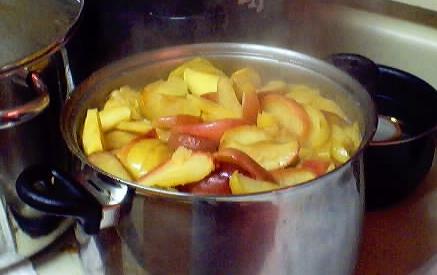 Step
7 - Cook the Apples
Step
7 - Cook the Apples
Pretty simple put about 4 inches of water (I used filtered tap water) on the bottom of a huge, thick-bottomed pot. Put the lid on, and the heat on medium. Simmer gently until the apples are soft through and through.
Hardware stores sell a fruit steamer. I haven't used one yet, but I hear they work well.
NOTE: If you have a electric juicer, you can simply juice the chopped apples, then skip to step 7 to heat the juice to boiling.
See here for related tools, equipment, supplies on Amazon See here for related tools, equipment, supplies on Amazon See here for related tools, equipment, supplies on Amazon
Step 8 - Sieve the cooked apples
Now you want to separate the liquid from the pulp, skins, seeds, stems, etc. There are quite a variety of ways to filter the apples.
Unfiltered juice:
- I like a natural apple cider, with the natural cloudiness of the fruit particles in it, so I just plop the cooked apples into a large metal or plastic sieve or colander.
- You can also refrigerate the juice for 24 to 48 hours and then Decant it (without mixing, carefully pour off clear liquid and discard sediment).
Filtered juice:
- A better way if you want filtered apple cider is just to line your sieve or colander with several layers of cheese cloth and let the juice drip through. It could take an hour..
- If you want really clear apple cider (but most people prefer "natural" style with some solids) you can strain the juice through a paper coffee filter place inside a sieve or colander.
- If you want more filtered apple cider, use a jelly bag. Just pour hot prepared fruit pulp into a jelly bag and let it drip. . Do not squeeze the bag.! In my experience this method takes forever.
Note: One of the easiest ways to extract juice is by using a steam juicer available at many hardware and variety stores. If you plan on making a lot of juice or doing this every year, it may be worth buying one. This unique piece of equipment allows you to conveniently extract juice by steaming the fruit which is held in a retaining basket. The juice drops into a reservoir which has a tube outlet for removal. Follow manufacturer's instructions for using steam juicer.
If your goal is to make apple cider, you will still have a lot of apple pulp left, so I'd recommend you make apple sauce from it (see this page)
Step 9 - Sanitize all equipment
Next, pour the cider into a sanitized fermentation bucket ; an unsanitized bucket may spoil the cider. To sanitize, pour a capful of bleach into your bucket, fill it with water, let it sit for a half an hour, then dump out and rinse with cold water. (You can also buy non-bleach, no-rinse sanitizers at homebrew stores.) /p>
Step 10 - Add the juice and yeast in the fermentation vessel
When the cider is close to room temperature, add your yeast or yeast starter, if you made one. Stir with a sanitized stainless steel or plastic spoon, then seal the lid and attach the airlock. Put the bucket where the temperature is 60 to 75 degrees (better on the low end of that range) and away from light, sun and drafts. If the temperatures drops below 60, the cider won't ferment, and temperatures above 75 will hasten fermentation, but may cause a less desirable flavor. You can also add cinnamon, nutmeg, cloves or ginger to taste. I like 1 teaspoon of ground cinnamon per gallon.
Step 11 - Wait and watch while it fermentsas they convert sugars in the juice to alcohol. Your soft cider is on its way to becoming hard cider! How long to let it go? If you just want the tangy taste of hard cider without the alcohol, just 2 days is enough. then move on to step 12.
If you want a hard cider, let it go until the biubbling subsides, usually within two weeks. After that, let the cider sit another week ast 60 - 70 F to allow the yeast to settle out.
Step 12 - Drink or store the cider
Prett self-explanatoy - keep in a fridge, freeze, or bottle the cider. To bottle the cider, follow steps 13 on.
Step 13 - Bottling the cider - Heat the cider
Put the apple cider into a large pot. If you want, add cinnamon to taste. You should not need to add any sugar.
The apple cider does not need any further cooking; just get it heat it to a low simmering boil and keep it hot until you get enough made to fill the
jars you will put into the canner (Canners hold seven jars at once, whether they are quart or pint size)3>
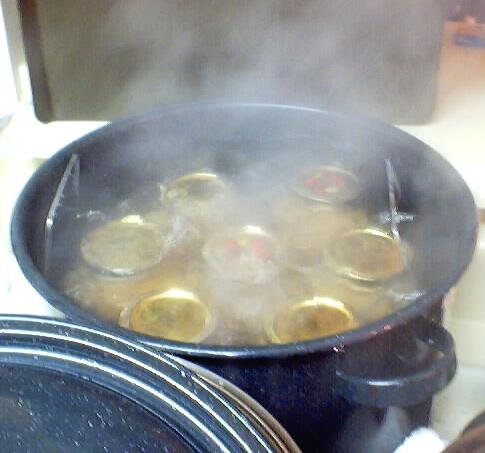 Step
Step 14 - Fill the jars and process them in the water bath
Step
Step 14 - Fill the jars and process them in the water bath
Fill them to within 1/4-inch of the top, wipe any spilled apple cider of the top, seat the lid and tighten the ring around them. Put them in the
canner and keep them cover with at least 1 or 2 inches of water and boiling. if you are at sea level (up to 1,000 ft) boil pint or quart jars for 5
minutes and half gallon jars for 10 min.his assumes you kept the juice hit until you filled the jars. If you are at an altitude of 1,000 feet or more, see
the chart below Recommended process time for
Apple Cider
in a boiling-water canner.
Process Time at Altitudes of
Style of Pack
Jar Size
0 - 1,000 ft
1,001 - 6,000 ft
Above 6,000 ft
Hot
Pints or Quarts
5 min
10
15
Half-Gallons
10 min
15
20
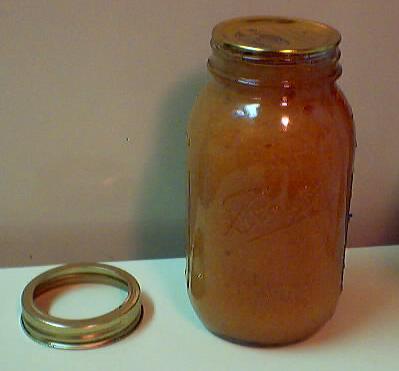 Step Step 15 - Remove and cool the jars - Done
Step Step 15 - Remove and cool the jars - Done
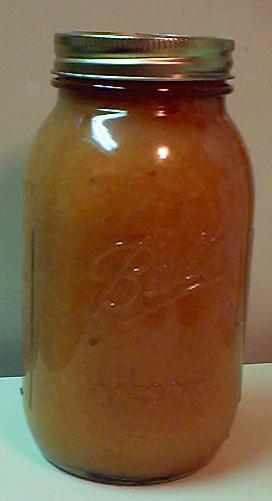 Lift the jars out of the water and let them cool without
touching or bumping them in a draft-free place (usually takes overnight) You can then remove the rings if you like, but if you leave them on, at
least loosen them quite a bit, so they don't rust in place due to trapped moisture. Once the jars are cool, you can check that they are sealed verifying
that the lid has been sucked down. Just press in the center, gently, with your finger. If it pops up and down (often making a popping sound), it is not
sealed. If you put the jar in the refrigerator right away, you can still use it. Some people replace the lid and reprocess the jar, then that's a bit
iffy. If you heat the contents back up, re-jar them (with a new lid) and the full time in the canner, it's usually ok. >
Lift the jars out of the water and let them cool without
touching or bumping them in a draft-free place (usually takes overnight) You can then remove the rings if you like, but if you leave them on, at
least loosen them quite a bit, so they don't rust in place due to trapped moisture. Once the jars are cool, you can check that they are sealed verifying
that the lid has been sucked down. Just press in the center, gently, with your finger. If it pops up and down (often making a popping sound), it is not
sealed. If you put the jar in the refrigerator right away, you can still use it. Some people replace the lid and reprocess the jar, then that's a bit
iffy. If you heat the contents back up, re-jar them (with a new lid) and the full time in the canner, it's usually ok. >
FAQs and Tips
- Q. Using a Juicer? "I was reading the apple cider canning instructions and was wondering if I can just juice the apples with my
electric juicer, then bring the juice to a boil, and can in a boiling water bath. Seems to me this would be easier even if the liquid separates
after canning in the jars.
A. Sure! That's perfectly fine!
Comments and Feedback
Other Equipment:
|
From left to right:
|
Canning kit with Stainless Steel Steam Rack,Canning Funnel, Jar Lifter, Jar Wrench, Lid Lifter, Canning Tongs, Bubble Remover Tool |
 |
 Granite Ware 21 QT, 9 Piece Enamelware Water bath Canning Pot with Canning kit, Colander and Rack VKP Brands Water Bath AND Steam Canner, 20 Quart Stainless Steel, flat-bottomed Induction range compatible and safe for smooth top ranges. 
|
Home Canning KitsSee the seller's website for more information, features, pricing and user reviews! This is the same type of standard canner that my grandmother used to make everything from apple juice to jams and jellies to tomato and spaghetti
sauce. This complete kit includes everything you need: the canner, jar rack, Jar grabber tongs, lid lifting wand, a plastic funnel, labels, bubble freer,
and the bible of canning, the Ball Blue Book. You will never need anything else except more jars and lids! |
| See here for related tools, equipment, supplies on Amazon |
Norpro 1951 Manual Food Strainer, with optional motor; (almost identical to Victorio V250, Villaware and Roma models, all discontinued)
See the seller's website for more information, features, pricing and user reviews! |
| See here for related tools, equipment, supplies on Amazon |
Deluxe Food Strainer and Sauce Maker
|
Lids, Rings, Jars, mixes, pectin, etc.Need lids, rings and replacement jars? Or pectin to make jam, spaghetti sauce or salsa mix or pickle mixes? Get them all here, and usually at lower prices than your local store!
Get them GetGet them all here at the best prices on the internet! |
Looking for canning equipment and supplies?
Water bath canner with a jar rack
Pressure canners for gas, electric and induction stoves: Presto 23Qt or T-fal 22Qt
Canning scoop (this one is PERFECT)
Ball Blue book (most recent version)
Jars: 8oz canning jars for jams
Find Other types of farms:
Farm markets and roadside stands
Road trips and camping resources
Local Honey, apiaries, beekeepers
Consumer fraud and scams information
Home canning supplies at the best prices on the internet!
Maple Syrup Farms, sugarworks, maple syrup festivals
Environmental information and resources
Farms For Your Event for birthday parties, weddings, receptions, business meetings, retreats, etc.
Festivals - local fruit and vegetable festivals
Get the
most recent version of
the Ball Blue Book
With this Presto 23 quart pressure canner and pressure cooker, you can "can" everything, fruits, vegetables, jams, jellies, salsa, applesauce, pickles, even meats, soups, stews. Model 01781

You can make jams, jellies, can fruit, applesauce, salsa and pickles with water bath canners, like this Granite Ware 12-Piece Canner Kit, Jar Rack, Blancher, Colander and 5 piece Canning Tool Set


